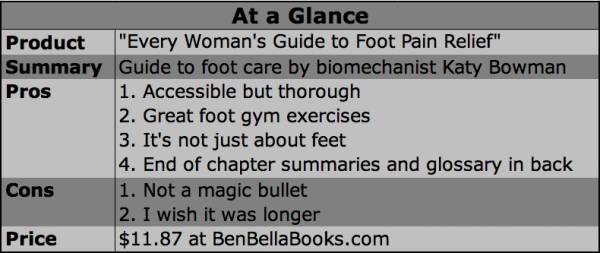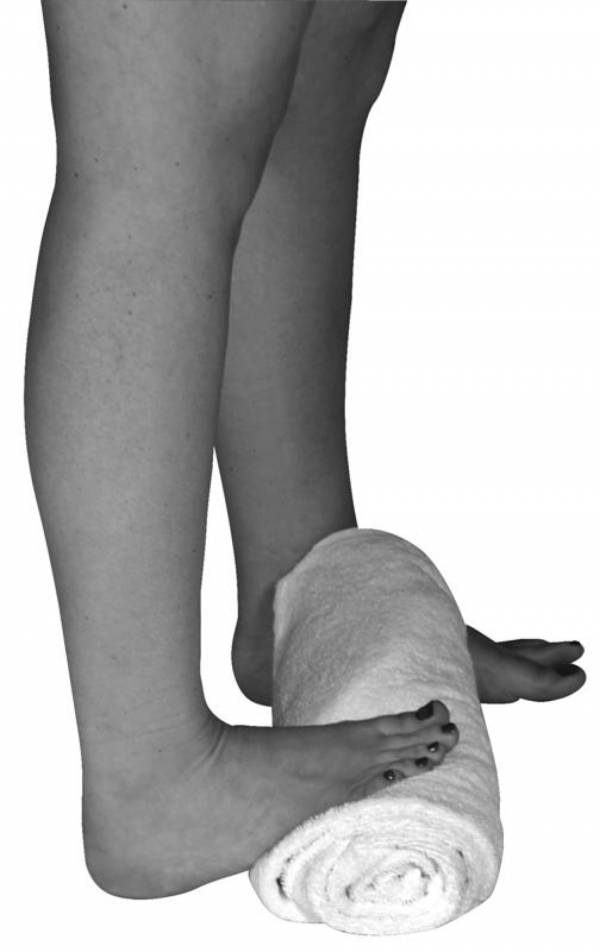

If you follow Katy Bowman’s blog, you are probably familiar with her ability to strike that balance between teaching you new concepts and making you laugh. Katy has this amazing ability to express complicated ideas in layman’s terms without simply dumbing them down so much that they aren’t even accurate anymore. Katy is a biomechanist and the director of the Restorative Exercise Institute in Ventura, California. Her work is always thorough and scientific, but with a critical eye that is able to spot the inconsistencies and missing gaps that you sometimes find in studies.
Although I have been reading her blog for some time, I put off reading her book, Every Woman’s Guide to Foot Pain Relief. Although I do get shin splints every now and then, I don’t suffer from severe or chronic foot pain and therefore didn’t think this book was for me. When I finally decided I needed to read Katy’s book, I was shocked to discover that although I might not suffer from debilitating foot pain, my feet are not as fit as they should be.
However, you should know that this book is not just about feet. Or, to be more precise, foot problems are not just about feet. This book is really about the relationship between our footwear, foot care, and alignment and gait patterns. In this book, you will learn about bunions, plantar fasciitis, the effects of a high heel habit, and even some basic anatomy of the feet. But you’ll also learn about gait patterns, rib thrusting, and pelvis tucking. As Katy says in the Introduction:
This book is also about something bigger than your feet (even if you have really big feet). This book will also talk about ailments north of the ankles that are being influenced by the state of your feet – ailments created where other body parts are responding to the impact of your footwear. Because of the way our health care system is segmented, experts of the feet don’t typically talk to the experts of the spine or experts of the nervous system.
Here are five of the most important lessons I took from Katy’s book:
1. The foot needs to be free.
That doesn’t mean you have to go barefoot all the time – unless that’s a viable option for you! but wearing shoes that limit range of motion (like that cute pair of heels in the closet) will have an impact. I especially appreciate that Katy addresses the issue of restrictive footwear during childhood.
2. A restricted foot affects the whole body.
As Katy says, “The function of the foot goes way beyond the scrunching of the toes and the stabilizing of the ankle. The foot is the platform for your entire body. The muscles have to be strong enough to keep your entire body moving as smoothly as possible.”
3. It works both ways, though.
Even if you wear minimalist footwear and exercise your feet regularly, improper alignment and movement patterns will undo, or at least minimize, your hard work. Katy details this in Chapter 3, aptly titled “The Foot Bone Is Connected to the Hip Bone”:
Keeping the pelvis stacked correctly is an essential part of foot health. Drawing a vertical line down from the center of mass clearly shows the difference in weight placement, which is over the front of the feet when the pelvis is too far forward.
4. Social norms also affect your feet.
Just as cute heels are not (ever) the best option for your feet, pretty posture does not equal proper alignment. The concept of ‘posture’ is based more on social preferences than it is on sound biomechanical research.
5. Bunions are not sealed in my genetic destiny.
My 26-year-old feet are already well on their way to bunions, but I feel less like a victim of genetic fate after reading this book. I am now fairly certain that walking miles a day in high heels at an earlier phase of my life, combined with a chronic habit of standing like I am permanently attached to a ballet barre have more to do with the state of my feet than my dear grandmother.

“The Foot Gym” has to be my favorite chapter, though. I have only been doing the exercises Katy provides in this chapter for one month and I’ve already noticed a huge difference. The exercises are simple but challenging. When I first started, I couldn’t even spread my toes from side to side, and I also couldn’t lift my big toe without crossing over my second toe. I’ve made a lot of progress in both areas, and even got my husband and daughter doing the exercises.
One more thing I appreciated about Katy’s book: she doesn’t just say, “Go out and buy minimalist shoes.” In Chapter 10, Katy outlines 7 tips for transitioning to minimalist footwear. She also emphasizes that the road to foot pain relief may not always be a quick one, particularly if you choose to forego operations and medical procedures that might not be absolutely necessary. Rather than offering a one-size-fits all, immediate solution to foot pain, Katy recommends easing into the exercises, in order to provide consistent care for your feet – and your whole body. To my mind, this makes her book – and her general approach – much more effective and trustworthy than the gimmicks out there.
“Every Woman’s Guide to Foot Pain Relief” is available on Amazon.






